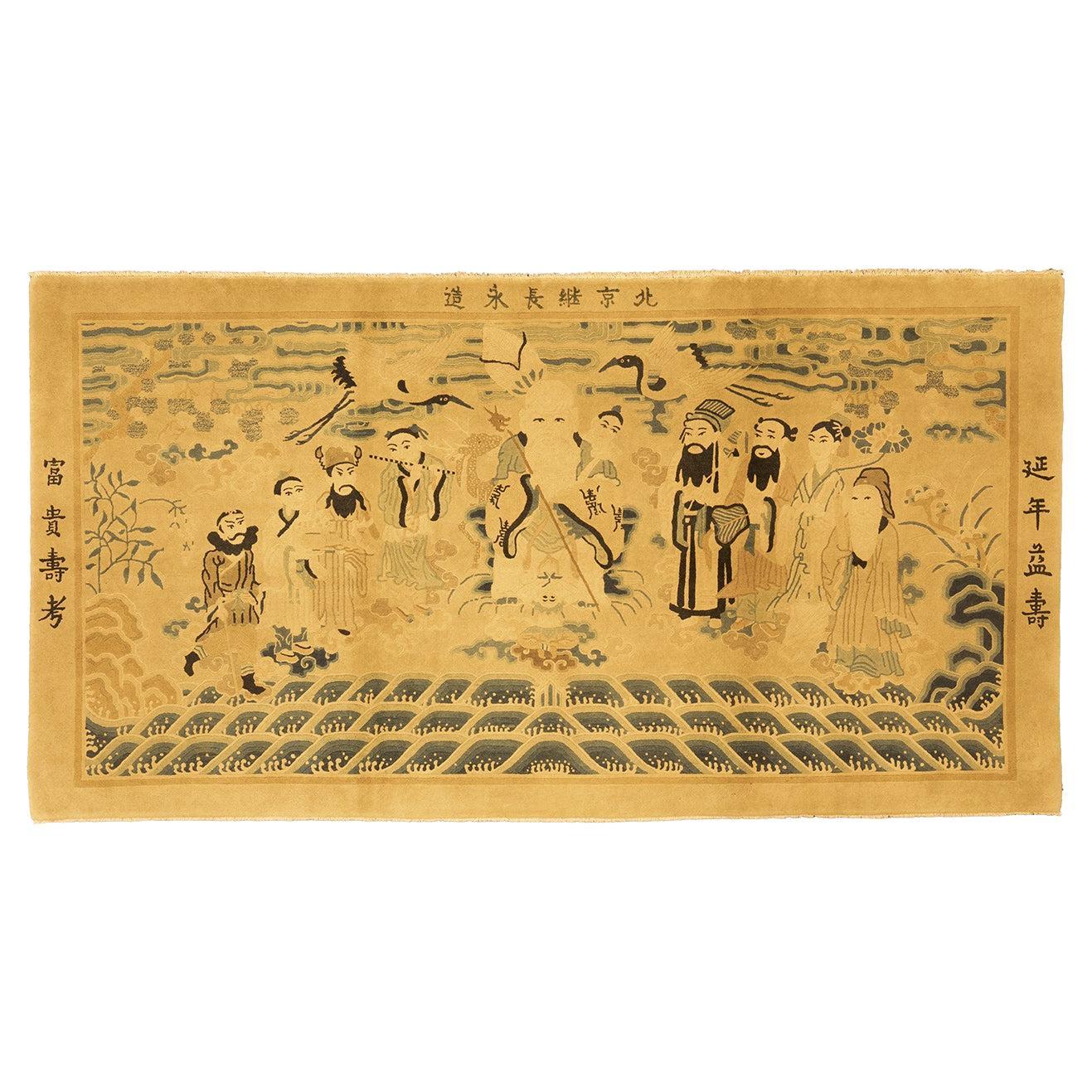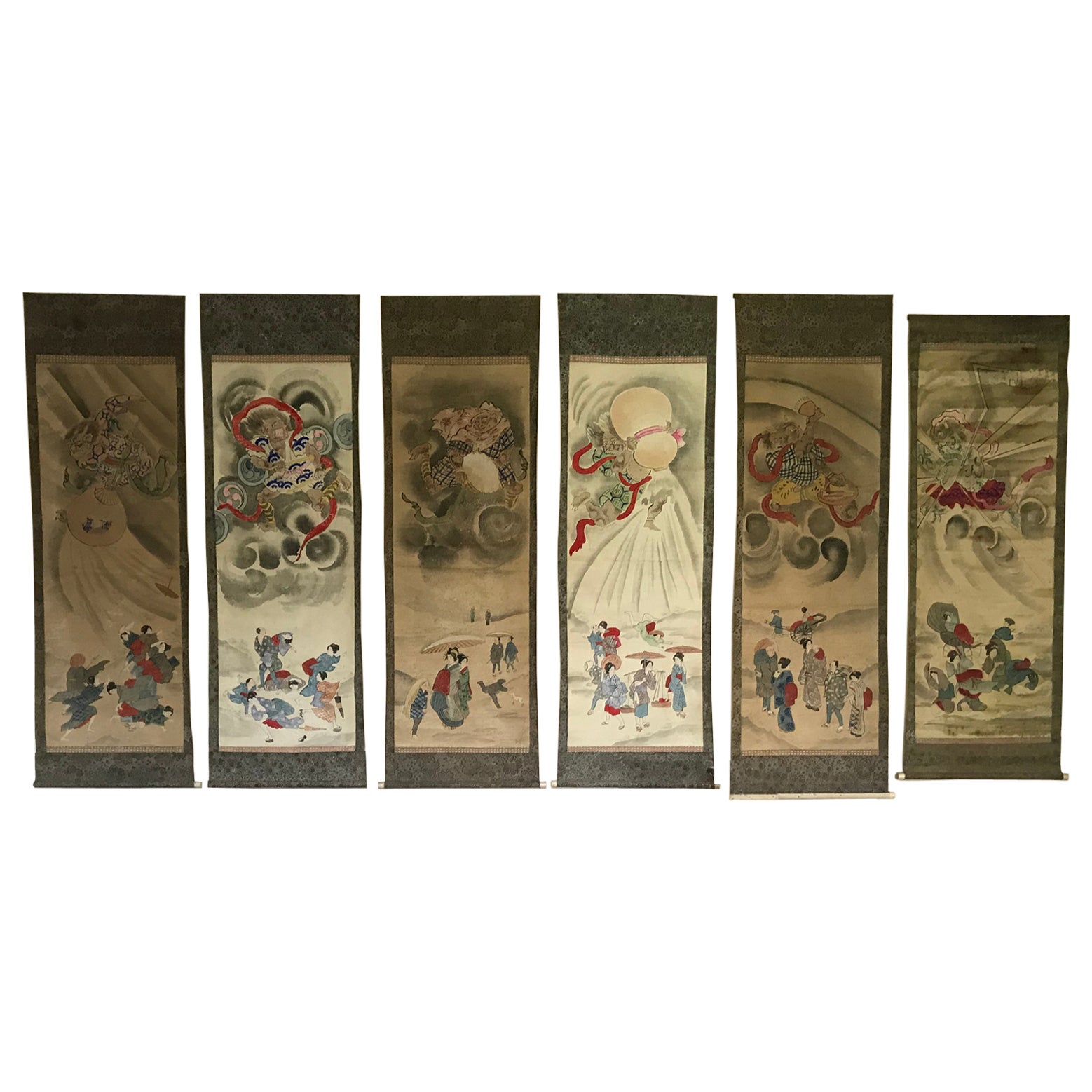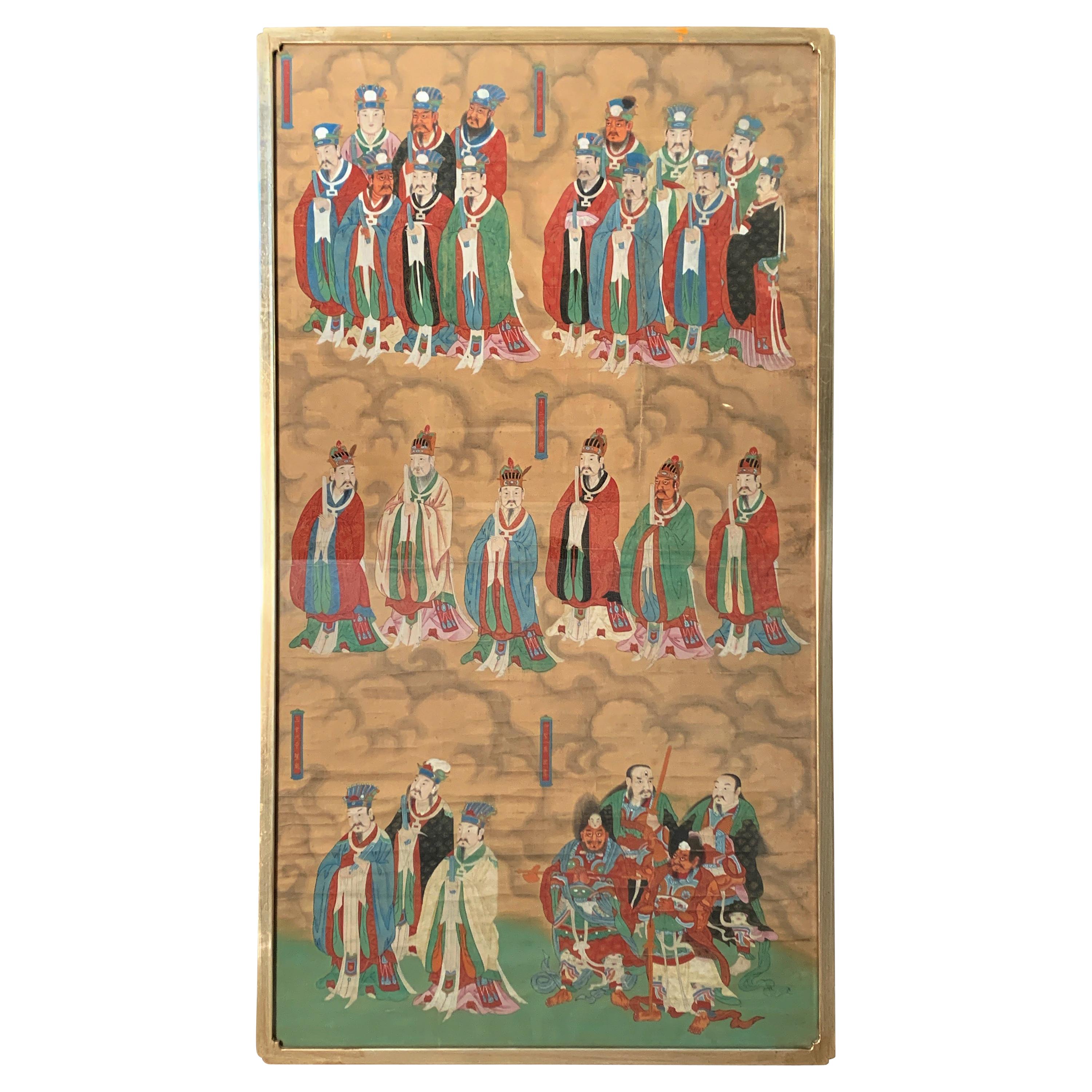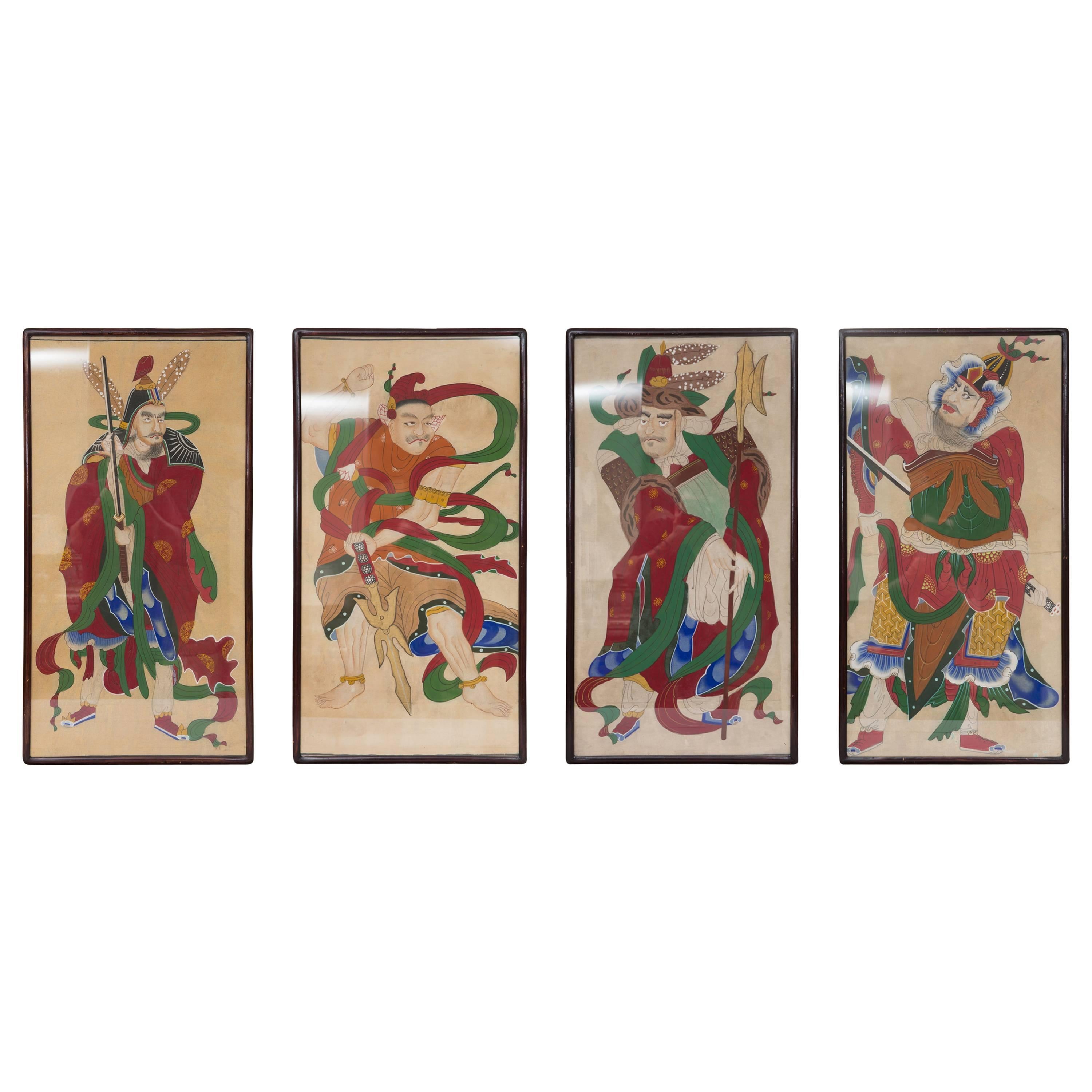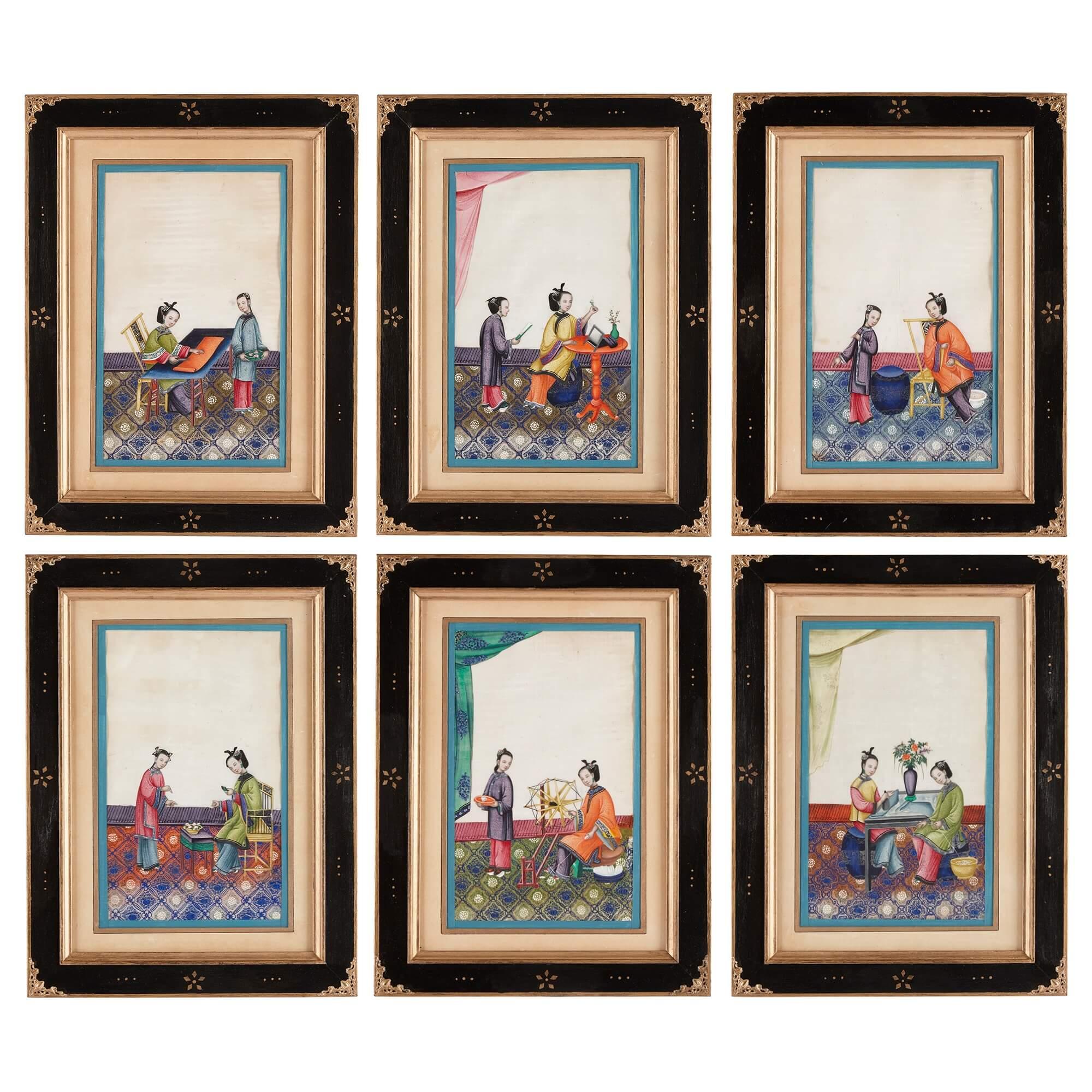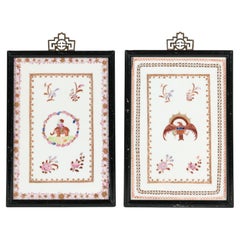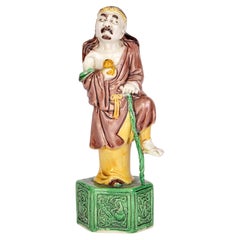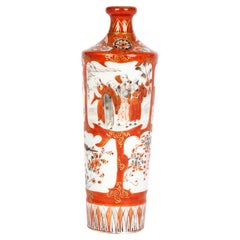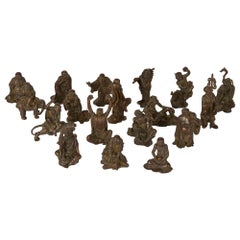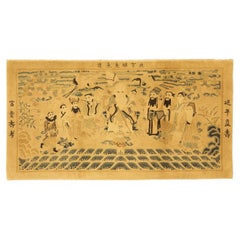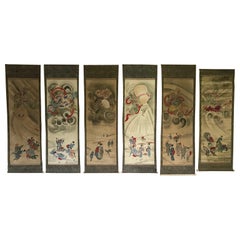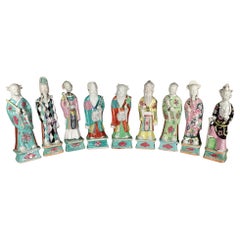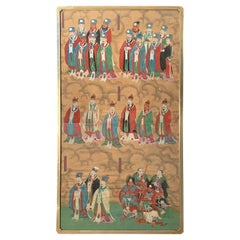Items Similar to Chinese Unusual Set of Eight Daoist Immortals Hand Painted Tiles
Want more images or videos?
Request additional images or videos from the seller
1 of 21
Chinese Unusual Set of Eight Daoist Immortals Hand Painted Tiles
$1,914.37per set
£1,395per set
€1,640.23per set
CA$2,643.22per set
A$2,931.14per set
CHF 1,540.10per set
MX$35,813.53per set
NOK 19,268.70per set
SEK 18,086.97per set
DKK 12,244.62per set
About the Item
An unusual set of eight Chinese, probably late qing, porcelain tiles hand painted with Daoist immortals and dating from the latter end of the 19th century. The tiles of rectangular shape are each painted with a figure, one riding a donkey, standing perched on an object within a sea landscape. The figures are well painted, and each has an inscription painted to an upper corner. The tiles have been used and consequently have some losses and chipping to the extremities do display well. The sizes also vary slightly.
Provenance: Acquired in the UK Art Market.
- Dimensions:Height: 5.12 in (13 cm)Width: 2.96 in (7.5 cm)Depth: 0.32 in (8 mm)
- Sold As:Set of 8
- Style:Qing (Of the Period)
- Materials and Techniques:
- Place of Origin:
- Period:
- Date of Manufacture:Circa 1900
- Condition:Wear consistent with age and use. Minor losses.
- Seller Location:Bishop's Stortford, GB
- Reference Number:Seller: OR233301stDibs: LU1328240721232
About the Seller
5.0
Platinum Seller
Premium sellers with a 4.7+ rating and 24-hour response times
Established in 2009
1stDibs seller since 2015
1,402 sales on 1stDibs
Typical response time: 2 hours
Associations
LAPADA - The Association of Arts & Antiques DealersInternational Confederation of Art and Antique Dealers' Associations
- ShippingRetrieving quote...Shipping from: Bishop's Stortford, United Kingdom
- Return Policy
Authenticity Guarantee
In the unlikely event there’s an issue with an item’s authenticity, contact us within 1 year for a full refund. DetailsMoney-Back Guarantee
If your item is not as described, is damaged in transit, or does not arrive, contact us within 7 days for a full refund. Details24-Hour Cancellation
You have a 24-hour grace period in which to reconsider your purchase, with no questions asked.Vetted Professional Sellers
Our world-class sellers must adhere to strict standards for service and quality, maintaining the integrity of our listings.Price-Match Guarantee
If you find that a seller listed the same item for a lower price elsewhere, we’ll match it.Trusted Global Delivery
Our best-in-class carrier network provides specialized shipping options worldwide, including custom delivery.More From This Seller
View AllChinese Qing Pair Framed Armorial Famille Rose Porcelain Tiles
Located in Bishop's Stortford, Hertfordshire
An unusual pair antique Chinese Qing porcelain famille rose tiles with armorial styled decoration dating from the 19th century. The tiles of rectangular form are mounted within blac...
Category
Antique 19th Century Chinese Qing Ceramics
Materials
Porcelain
Chinese Qing Sancai Glazed Immortal Figure
Located in Bishop's Stortford, Hertfordshire
A fine antique Chinese porcelain figure of Immortal decorated in sancai glazes dating from 19th century. The figure stands raised on a six-sided pedestal...
Category
Antique 19th Century Asian Qing Ceramics
Materials
Porcelain
Kutani Japanese Meiji Porcelain Vase Painted with Figures
Located in Bishop's Stortford, Hertfordshire
Japanese Meiji porcelain Kutani vase hand painted with decorative and a figural panel dating between 1868 and 1912. The elegantly shaped tall ...
Category
Antique 19th Century Japanese Meiji Ceramics
Materials
Porcelain
Bronze Collection Eighteen Luohan Disciples, 18th-19th Century
Located in Bishop's Stortford, Hertfordshire
An extremely rare bronze collection of the eighteen (Archats) Luohan Disciples as adorned in Chinese Buddhist culture. The figures are exceptionally well made and represent the Luoha...
Category
Antique Late 18th Century Chinese Metalwork
Materials
Bronze
Chinese Qing Porcelain Brush Pot Painted with Figures and Seal Mark with Stand
Located in Bishop's Stortford, Hertfordshire
A fine quality Chinese Qing porcelain brush pot with wooden stand hand painted with children and lady and with Zhuanshu script mark to the base dating from the 19th century. The brus...
Category
Antique 19th Century Chinese Qing Ceramics
Materials
Porcelain, Wood
Set Four Dutch Manganese Biblical Pottery Tiles, 18th Century
Located in Bishop's Stortford, Hertfordshire
A wonderful set of four antique Dutch ‘Delft’ style manganese tiles hand decorated with biblical scenes probably originating from Rotterdam and dating f...
Category
Antique 18th Century Dutch Arts and Crafts Ceramics
Materials
Ceramic
You May Also Like
Chinese Rug Peking Nine Immortals Design
Located in Ferrara, IT
Experience the beauty and magic of ancient Chinese art with this Chinese Peking Rug, featuring the stunning 9 Immortals design! This unique Chinese rug is a true masterpiece, showcas...
Category
Antique Early 1900s Chinese Russian and Scandinavian Rugs
Materials
Wool
Set of 6 Large Kakemonos Japanese Mythology, 19th Century Japan circa 1800 Edo
Located in Beuzevillette, FR
Beautiful set of 6 large kakemonos from 19th century Japanese mythology.
Paper support with a canvas pasted on the paper
Wonderful set that is part of Japan's history and beliefs
When not hung, the Kakemonos are rolled up.
circa 1800 - Japan - Edo Period
A kakemono translates as "object to hang". In Japan this refers to a painting or calligraphy, most often done on silk or paper framed in a scroll that was intended to be hung on walls or in public lighting. This particular form, which allows them to be in a roll, dates back to the Tang dynasty in China (this would be related to the copying and preservation of ancient Buddhist texts). A Kami is a deity or spirit worshipped in the Shinto religion. A Yokai is a spirit, ghost, demon, or strange apparition from the creatures of Japanese folklore.
Each of these kakemonos represents a unique story:
- A kami, a Japanese deity, is shown painting a rainbow. Indeed, he performs the action with his right hand while his left hand holds a kind of basket with three pots of paint. This kami has a rather closed attitude. He is standing in a dark and tormented sky. Below this figure, 8 villagers are dressed in traditional Japanese clothes. Their faces are softened. They are not afraid of the elements made by the kami above their heads.
- A character with an unreal look is holding a kind of jar with his two hands, which he spills on human figures above. This being is floating in the air, probably a character from mythology, perhaps Susanoo. Underneath, villagers on umbrellas. They are trying to protect themselves as best they can from what is falling on them. One of them is carrying baskets with fish on her shoulders. A character in the background is thrown forward and falls.
- On this kakemono, the god Raijin, dressed in a white and blue outfit, strikes the sky with his two drum hammers to create lightning and its thunderous sound. Surrounded by Tomoe and a long red scarf, Raijin, enraged and with dishevelled hair, creates a dark and violent storm. The villagers seem frightened by this meteorological phenomenon. One of the villagers can be seen fainting in the arms of a man. This scene may seem chaotic, but Japanese legend tells us that once a field is struck by lightning, the harvest is good.
- On this kakemono, we see an unreal-looking figure holding a fan, as if he were sweeping away the bad weather, or simply producing gusts of wind. He is probably the kami of wind and air, Shina tsu-hiko. The figures below him seem surprised by so much wind. An umbrella flies away on the left, the women hold their hair and scarf, the clothes are caught in the power of the wind, there is even a woman on the ground on the bottom left.
- This Kakemono represents a short moment. This Raiju is a yokai (ghost spirit...
Category
Antique 19th Century Japanese Edo Paintings
Materials
Paper
Chinese Export Porcelain Taoist Immortal Figures, Eight Immortals and the Leader
Located in Downingtown, PA
Chinese Export Porcelain Taoist Immortal Figures,
Eight Immortals and Shou Laou,
Late 18th-early 19th century
The Chinese Export porcelain figures each represent a different Taoist...
Category
Antique Late 18th Century Chinese Chinese Export Ceramics
Materials
Porcelain
Chinese Early Qing Dynasty "Water and Land Ritual" Painting, 17th Century
Located in Austin, TX
An important Chinese 17th century early Qing Dynasty "Water and Land Ritual" painting, mineral pigment and ink on silk, mounted as a scroll, framed and glazed.
The painting depicting groups of heavenly court officials and deities descending from the clouds to participate in the Liberation Rite of Land and Water. The figures all wear full, sumptuous robes, complete with hats indicating their station. The blue, green, red, black and white of the robes decorated with gilt dragon and geometric designs.
This painting is interesting in that it incorporates Daosit deities and heavenly officials coming down to participate in the Buddhist rite. There are five distinct groups of figures, each with a small inscribed plaque. Some of the groups are identified as Tian Xian, or Heavenly Immortals.
The group at the bottom left are identified as the Sanguan Dadi, or Three Great Emperor-Officials. The Emperor of Heaven is dressed in blue robes with gilt painted dragons. The Emperor of Water wears black robes. The Emperor of Earth wears yellow robes...
Category
Antique 17th Century Chinese Qing Paintings and Screens
Materials
Silk, Glass, Giltwood, Paint
Asian Chinese Ancient Warriors Hand-Painted
Located in WEST PALM BEACH, FL
These stunning paintings of ancient warriors in full costume offer a dramatic and colorful palate for a room decor, circa 1950.
Category
20th Century Chinese Other Paintings and Screens
Materials
Fabric, Paint
$4,800 / set
Antique Set of Six Chinese Paintings Depicting Weaving
Located in London, GB
Antique set of six Chinese paintings depicting weaving
Chinese, 19th Century
Panel: Height 32cm, width 21cm
Frame: Height 47.5cm, width 36cm, depth 1.5cm
This set of Chinese pith ...
Category
19th Century Figurative Paintings
Materials
Wood, Paper, Watercolor
More Ways To Browse
Hand Painted Antique China
Unusual Ceramics
Hand Painted Tile
Antique Hand Painted Tiles
Chinese Immortal
Chinese Tile
Antique Chinese Tiles
Chinese Painted Tiles
Porcelain Immortal
Eight Immortals
Chinese Porcelain Immortal
Daoist Art
Porcelain Donkey
Black Imari
Antique Japanese Miniature
Chinese Incense Burner
Japanese Edo Period Imari
Antique Chinese Fan
